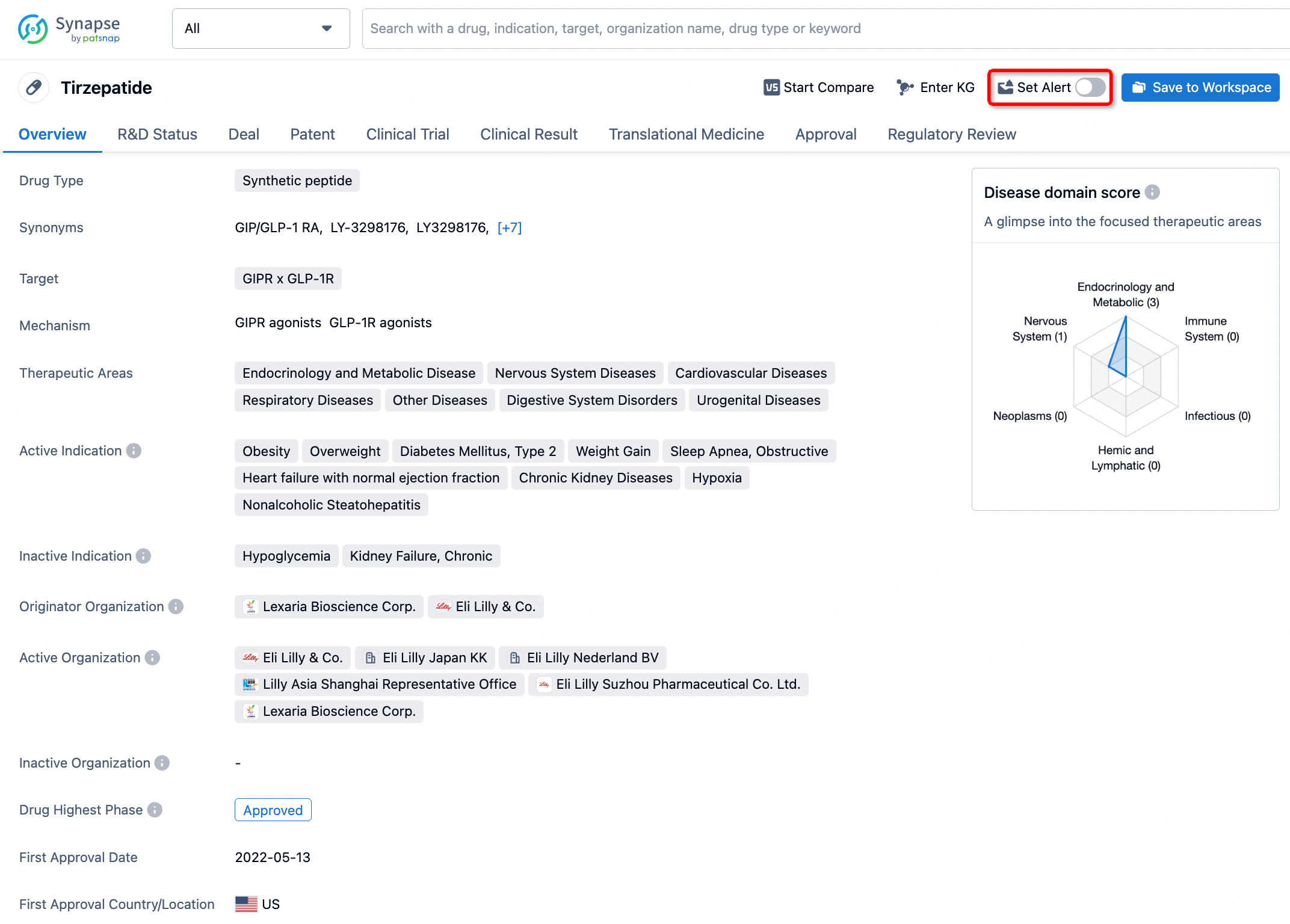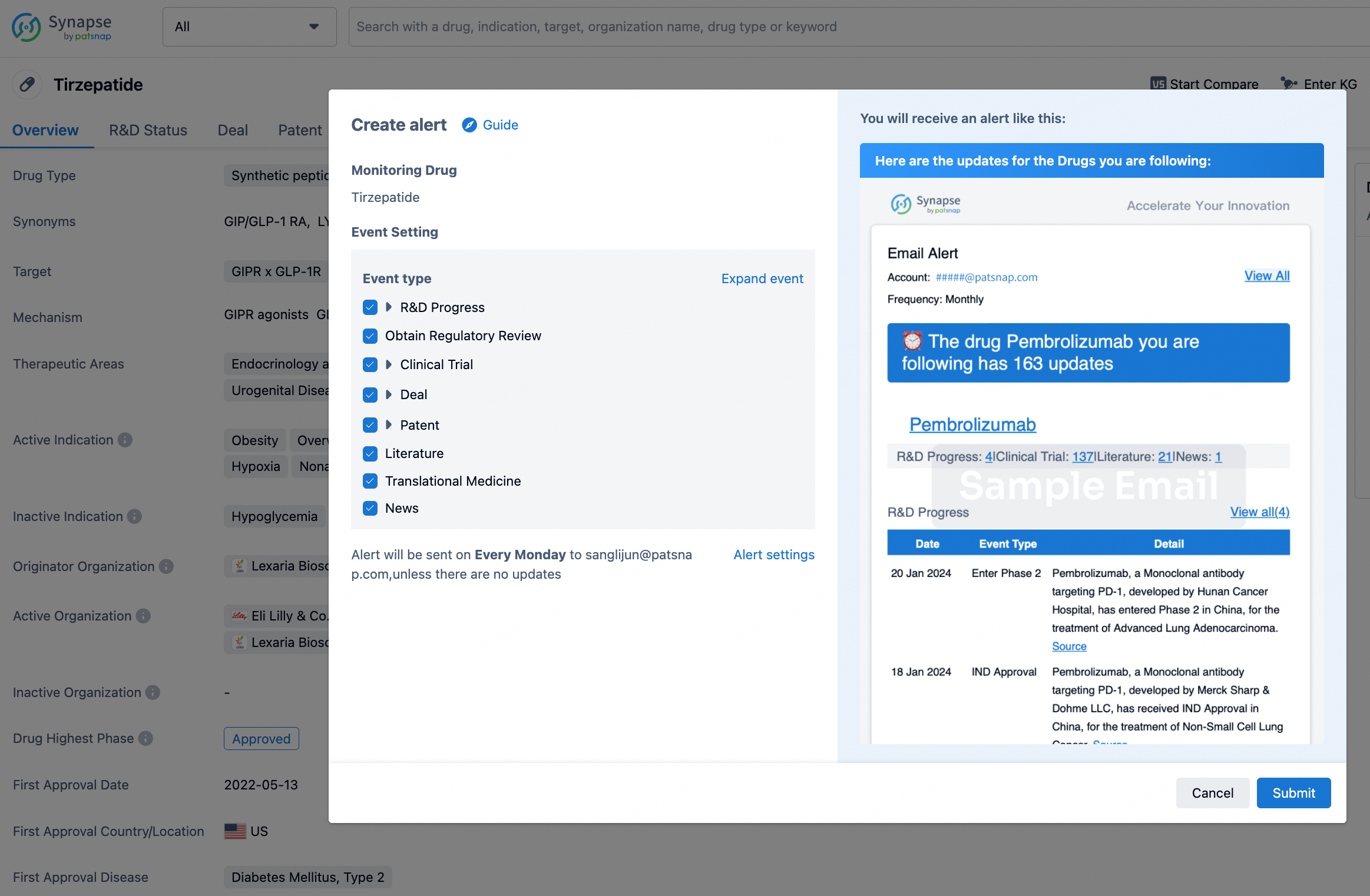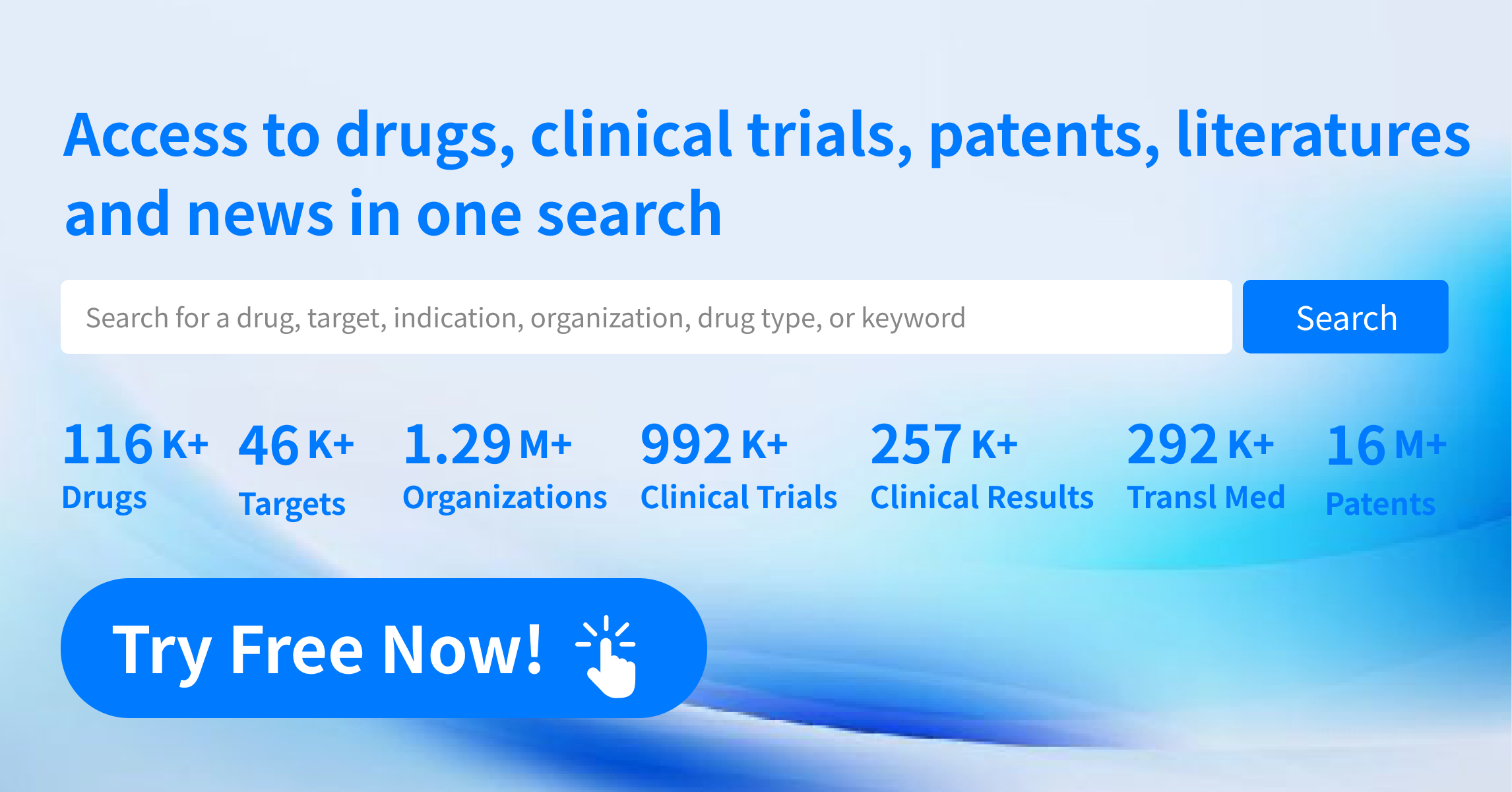Request Demo
What is Erythromycin Stearate used for?
15 June 2024
Erythromycin Stearate is a macrolide antibiotic that has been widely used in the treatment of bacterial infections. It is known under various trade names, including Erythrocin, Erythroped, and E-Mycin. Erythromycin Stearate targets a broad spectrum of bacterial pathogens and is particularly effective against Gram-positive organisms and some Gram-negative organisms. This antibiotic is produced by the bacterium Saccharopolyspora erythraea and has been a cornerstone in antimicrobial therapy since its discovery. It is primarily indicated for respiratory tract infections, skin infections, and sexually transmitted infections, such as chlamydia. Research institutions worldwide continue to study Erythromycin Stearate, focusing on its efficacy, resistance patterns, and potential new therapeutic applications.
The mechanism of action of Erythromycin Stearate involves inhibiting bacterial protein synthesis. Specifically, it binds to the 50S ribosomal subunit of susceptible bacteria, thereby blocking the translocation of peptides. This prevents the bacteria from synthesizing essential proteins, leading to growth inhibition and eventual death of the bacterial cell. Erythromycin Stearate is bacteriostatic at low concentrations but can be bactericidal at higher concentrations. Its effectiveness is heightened in an alkaline environment, which is why it is often formulated with a stearate salt to enhance stability and absorption.
Erythromycin Stearate can be administered orally and is available in tablet or liquid form. The usual dosage for adults is 250 mg to 500 mg every 6 to 12 hours, depending on the severity of the infection and the patient's overall health. For children, the dose is typically weight-based. Erythromycin Stearate should be taken on an empty stomach, at least 30 minutes before or 2 hours after meals, to maximize absorption. The onset of action is relatively quick, with peak plasma concentrations occurring within 1 to 4 hours after ingestion. For most infections, a course of 7 to 14 days is recommended, although the duration may be adjusted based on the patient's response and the type of infection being treated.
Like all medications, Erythromycin Stearate comes with potential side effects and contraindications. Common side effects include gastrointestinal disturbances such as nausea, vomiting, abdominal pain, and diarrhea. Less frequently, patients may experience skin rashes, itching, or more severe allergic reactions like anaphylaxis. Hepatotoxicity is a rare but serious side effect, characterized by elevated liver enzymes and jaundice. Erythromycin Stearate is contraindicated in patients with a known hypersensitivity to macrolide antibiotics. Additionally, caution should be exercised in patients with liver disease or those taking medications known to cause QT interval prolongation, as Erythromycin Stearate can exacerbate these conditions. Pregnant and breastfeeding women should use this medication only if the potential benefits outweigh the risks, as there is limited data on its safety in these populations.
Several drugs can interact with Erythromycin Stearate, affecting its efficacy and safety profile. Concomitant use of Erythromycin Stearate with drugs that prolong the QT interval, such as certain antiarrhythmics (e.g., amiodarone), antipsychotics (e.g., haloperidol), and other antibiotics (e.g., fluoroquinolones), can increase the risk of cardiac arrhythmias. Erythromycin Stearate is also a potent inhibitor of the cytochrome P450 3A4 (CYP3A4) enzyme, which means it can elevate plasma levels of drugs metabolized by this pathway. Examples include statins, leading to an increased risk of myopathy; certain benzodiazepines, causing prolonged sedation; and calcium channel blockers, potentially resulting in hypotension and bradycardia. Patients taking these medications should be monitored closely, and dosage adjustments may be necessary.
In conclusion, Erythromycin Stearate is a versatile and effective antibiotic with a long history of use in treating bacterial infections. Its mechanism of action, primarily targeting bacterial protein synthesis, makes it a valuable tool in combating a range of pathogens. Proper administration and awareness of potential side effects and drug interactions are crucial to maximizing its benefits while minimizing risks. As research continues, Erythromycin Stearate remains a vital component in the arsenal against bacterial infections, offering hope for ongoing and future therapeutic applications.
The mechanism of action of Erythromycin Stearate involves inhibiting bacterial protein synthesis. Specifically, it binds to the 50S ribosomal subunit of susceptible bacteria, thereby blocking the translocation of peptides. This prevents the bacteria from synthesizing essential proteins, leading to growth inhibition and eventual death of the bacterial cell. Erythromycin Stearate is bacteriostatic at low concentrations but can be bactericidal at higher concentrations. Its effectiveness is heightened in an alkaline environment, which is why it is often formulated with a stearate salt to enhance stability and absorption.
Erythromycin Stearate can be administered orally and is available in tablet or liquid form. The usual dosage for adults is 250 mg to 500 mg every 6 to 12 hours, depending on the severity of the infection and the patient's overall health. For children, the dose is typically weight-based. Erythromycin Stearate should be taken on an empty stomach, at least 30 minutes before or 2 hours after meals, to maximize absorption. The onset of action is relatively quick, with peak plasma concentrations occurring within 1 to 4 hours after ingestion. For most infections, a course of 7 to 14 days is recommended, although the duration may be adjusted based on the patient's response and the type of infection being treated.
Like all medications, Erythromycin Stearate comes with potential side effects and contraindications. Common side effects include gastrointestinal disturbances such as nausea, vomiting, abdominal pain, and diarrhea. Less frequently, patients may experience skin rashes, itching, or more severe allergic reactions like anaphylaxis. Hepatotoxicity is a rare but serious side effect, characterized by elevated liver enzymes and jaundice. Erythromycin Stearate is contraindicated in patients with a known hypersensitivity to macrolide antibiotics. Additionally, caution should be exercised in patients with liver disease or those taking medications known to cause QT interval prolongation, as Erythromycin Stearate can exacerbate these conditions. Pregnant and breastfeeding women should use this medication only if the potential benefits outweigh the risks, as there is limited data on its safety in these populations.
Several drugs can interact with Erythromycin Stearate, affecting its efficacy and safety profile. Concomitant use of Erythromycin Stearate with drugs that prolong the QT interval, such as certain antiarrhythmics (e.g., amiodarone), antipsychotics (e.g., haloperidol), and other antibiotics (e.g., fluoroquinolones), can increase the risk of cardiac arrhythmias. Erythromycin Stearate is also a potent inhibitor of the cytochrome P450 3A4 (CYP3A4) enzyme, which means it can elevate plasma levels of drugs metabolized by this pathway. Examples include statins, leading to an increased risk of myopathy; certain benzodiazepines, causing prolonged sedation; and calcium channel blockers, potentially resulting in hypotension and bradycardia. Patients taking these medications should be monitored closely, and dosage adjustments may be necessary.
In conclusion, Erythromycin Stearate is a versatile and effective antibiotic with a long history of use in treating bacterial infections. Its mechanism of action, primarily targeting bacterial protein synthesis, makes it a valuable tool in combating a range of pathogens. Proper administration and awareness of potential side effects and drug interactions are crucial to maximizing its benefits while minimizing risks. As research continues, Erythromycin Stearate remains a vital component in the arsenal against bacterial infections, offering hope for ongoing and future therapeutic applications.
How to obtain the latest development progress of all drugs?
In the Synapse database, you can stay updated on the latest research and development advances of all drugs. This service is accessible anytime and anywhere, with updates available daily or weekly. Use the "Set Alert" function to stay informed. Click on the image below to embark on a brand new journey of drug discovery!
AI Agents Built for Biopharma Breakthroughs
Accelerate discovery. Empower decisions. Transform outcomes.
Get started for free today!
Accelerate Strategic R&D decision making with Synapse, PatSnap’s AI-powered Connected Innovation Intelligence Platform Built for Life Sciences Professionals.
Start your data trial now!
Synapse data is also accessible to external entities via APIs or data packages. Empower better decisions with the latest in pharmaceutical intelligence.


